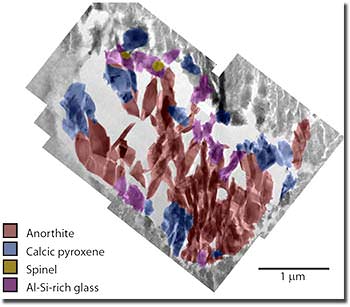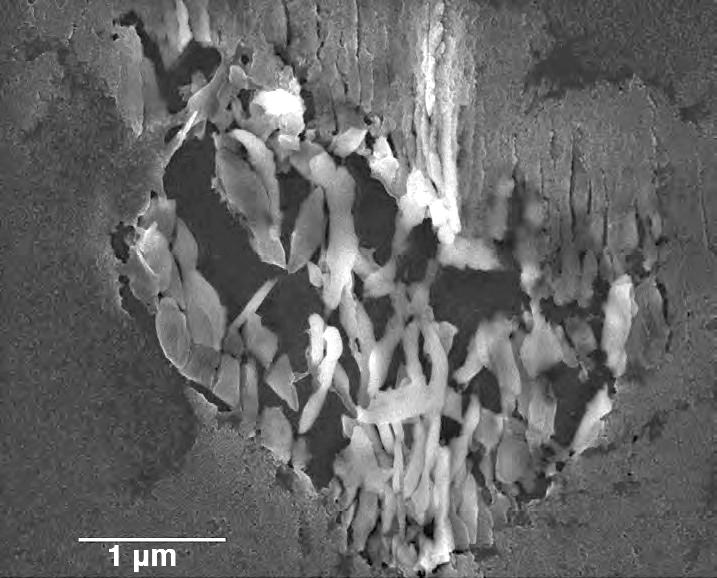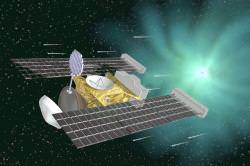[/caption]
One of the most surprising results from the Stardust mission – which returned comet dust samples to Earth in 2006 – is that comets don’t just consist of particles from the icy parts of the outer solar system, which was the common assumption, but also includes sooty dust from the hot, inner region close to the Sun. A new study confirms this finding, and also provides the first chronological information from the Wild 2 comet (pronounced like Vilt 2). The find paints a chaotic picture of the early solar system.
Even some of the first looks at the cometary particles returned by Stardust showed that contrary to the popular scientific notion, there was enough mixing in the early solar system to transport material from the sun’s sizzling neighborhood and deposit it in icy deep-space comets. Whether the mixing occurred as a gentle eddy in a stream or more like an artillery blast is still unknown.
“Many people imagined that comets formed in total isolation from the rest of the solar system. We have shown that’s not true,” said Donald Brownlee back in 2006, principal investigator for Stardust.
The new study, conducted by scientists from Lawrence Livermore (Calif.) National Laboratory, shows the dust from comet 81P/Wild 2 has been altered by heating and other processes, which could have only occurred if a transport of space dust took place after the solar system formed some 4.57 billion years ago.
“The mission was expected to provide a unique window into the early solar system,” the team, led by Jennifer Matzel wrote in their paper, “by returning a mix of solar system condensates, amorphous grains from the interstellar medium, and true stardust – crystalline grains originating in distant stars. Initial results, however, indicate that comet Wild 2 instead contains an abundance of high-temperature silicate and oxide minerals analogous to minerals in carbonaceous chondrites.”

They analyzed a particle from the comet, about five micrometers across, known as Coki. The particle does not appear to contain any of the radiogenic isotope aluminum-26, which implies that this particle crystallized 1.7 million years after the formation of the oldest solar system solids. This means that material from the inner solar system must have traveled to the outer solar system, across a period of at least two million years.
“The inner solar system material in Wild 2 underscores the importance of radial transport of material over large distances in the early solar nebula,” said Matzel. “These findings also raise key questions regarding the timescale of the formation of comets and the relationship between Wild 2 and other primitive solar nebula objects.”
The presence of CAIs in comet Wild 2 indicates that the formation of the solar system included mixing over radial distances much greater than anyone expected.
Sources: LLNL, Astrobiology


